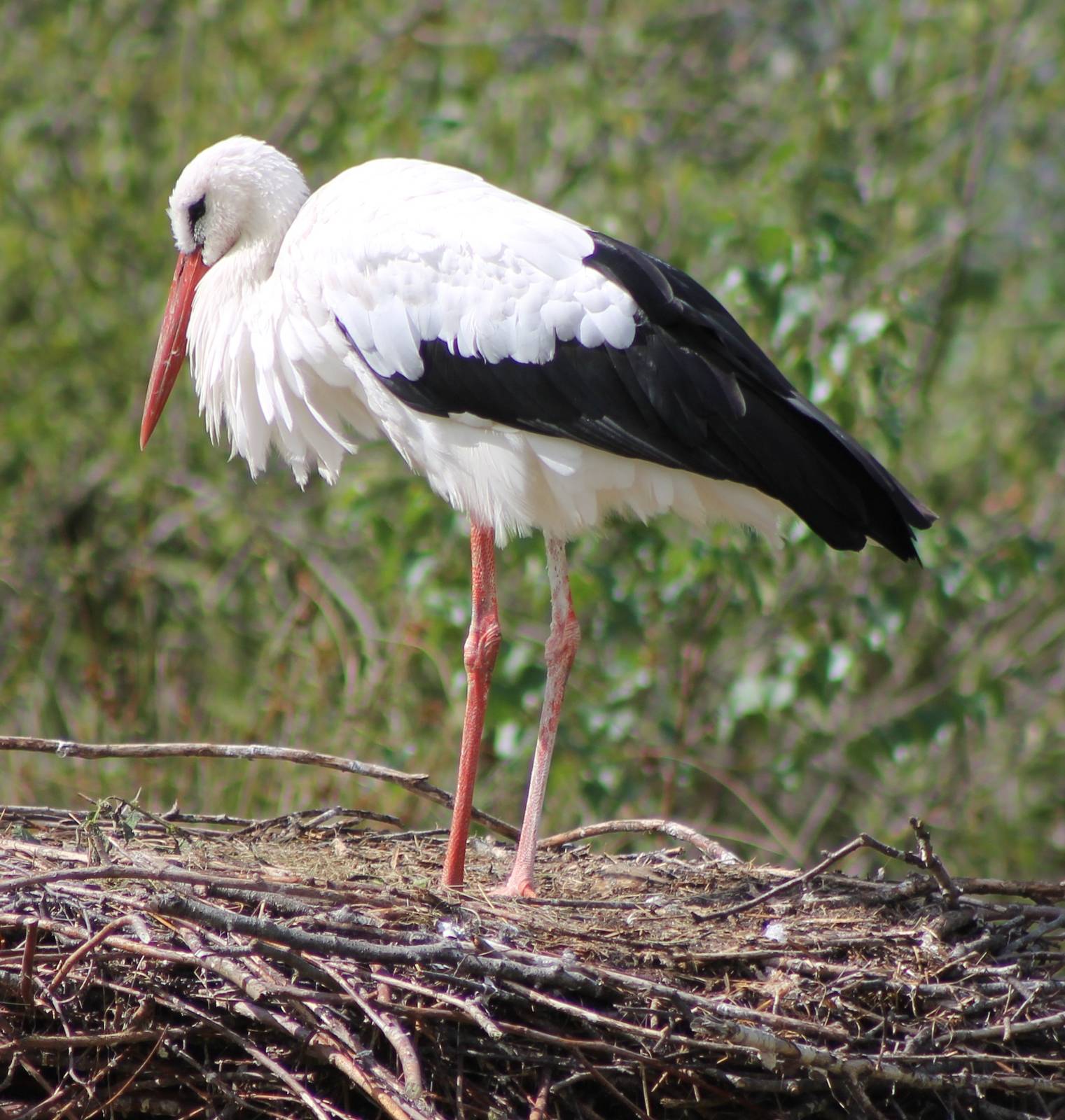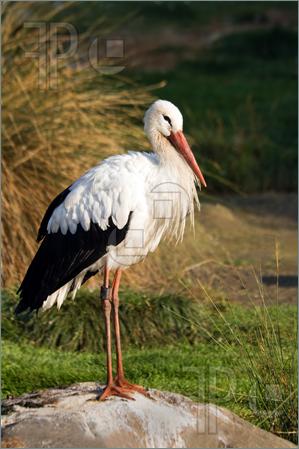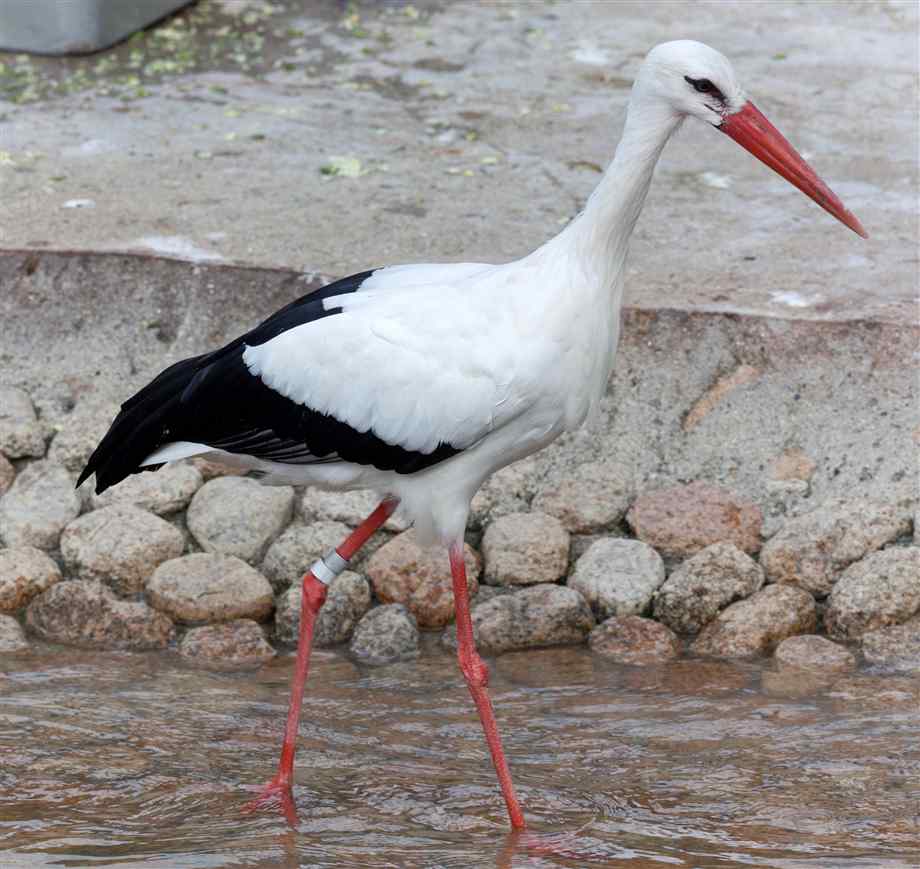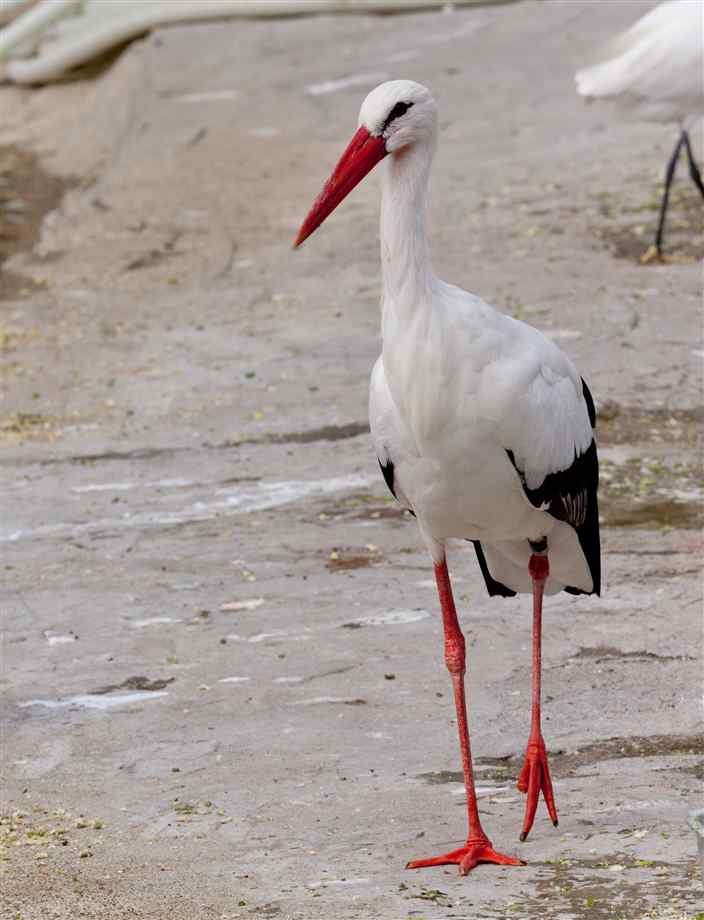
Ciconia ciconia
SUBFAMILY
Tribe Ciconiini
TAXONOMY
Ardea ciconia Linnaeus, 1758, Sweden. Two subspecies.
OTHER COMMON NAMES
English: White stork; French: Cigogne blanche; German:
Weisstorch; Spanish: Cigьeсa Blanca.
PHYSICAL CHARACTERISTICS
Length 39–40 in (100–102 cm), wingspan 61–65 in
(155–165cm); 5.1–9.7 lb (2.3–4.4 kg). Mostly white with black
on wings and red/orange bill and legs.
DISTRIBUTION
Summer breeding population in Europe and western Asia, wintering
in tropical Africa and India. A resident population also
in South Africa.
HABITAT
Open spaces without tall and thick vegetation, frequently in or
near wetlands. Will nest in towns and villages.
BEHAVIOR
Less gregarious than other storks, but migrates in groups.
Adept at soaring on thermals during long migrations along
well-defined routes. Uses bill-clattering in displays.
FEEDING ECOLOGY AND DIET
Varied diet of animal matter, from insects and earthworms, to
lizards, snakes, and amphibians. Locates prey by sight.
REPRODUCTIVE BIOLOGY
In temperate north, nesting starts between February and April.
Nests are large constructions of sticks lined with a variety of
soft natural or human-made objects located in trees or on suitably
tall human-made structures. Loosely colonial, but may
nest alone. Clutch size averages four eggs, incubation 33–34
days, fledging 58–64 days.
CONSERVATION STATUS
Significant local declines in Western Europe, where it is
Threatened. Declines linked to the reduction of swarms of locusts
(an important source of food) in west African wintering
grounds, and reduction of food-rich habitats in breeding areas
as a result of the intensification of agriculture. Also threatened
by hunting and collisions with power lines.
SIGNIFICANCE TO HUMANS
Traditionally a popular bird, nesting on houses is welcomed as
conferring good fortune and fertility to householders. Also
some economic value as pest controllers.
Photo Gallery of - European white stork




 Animalia Life
Animalia Life